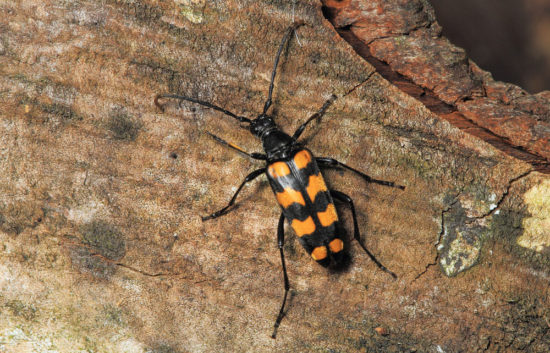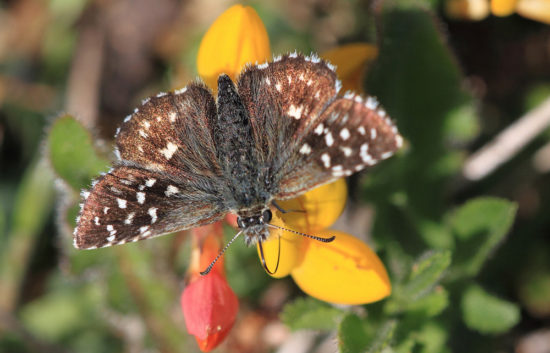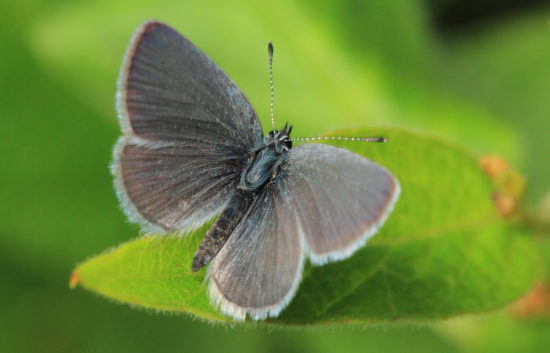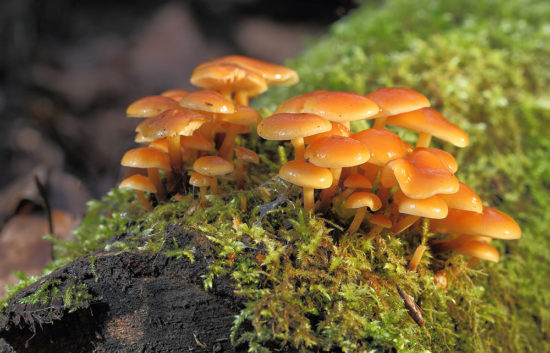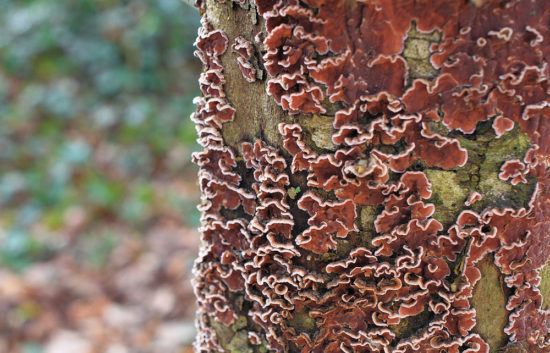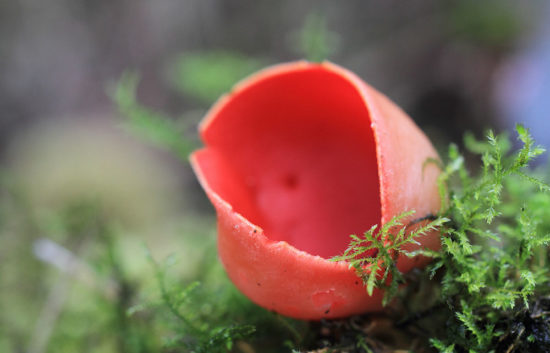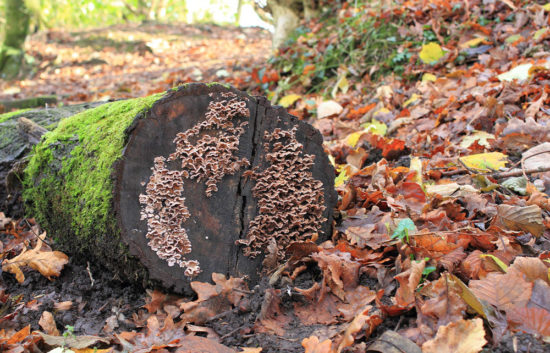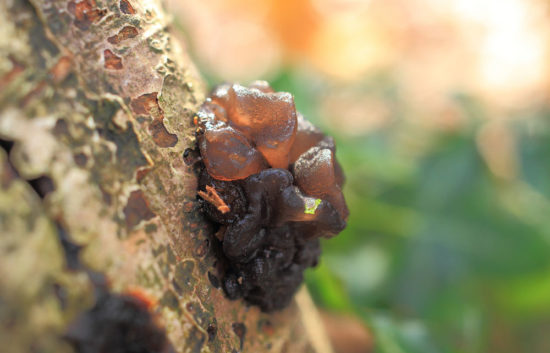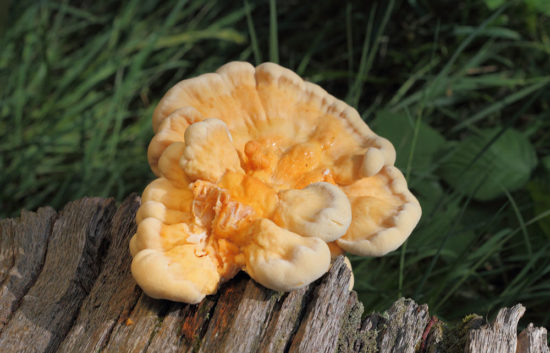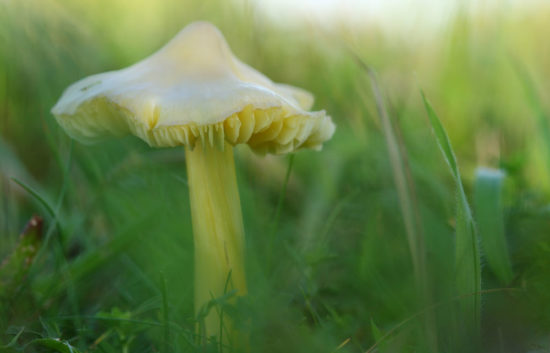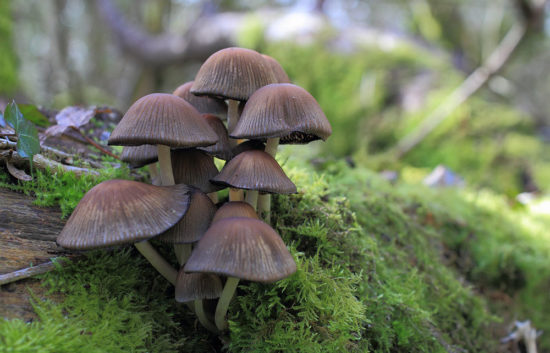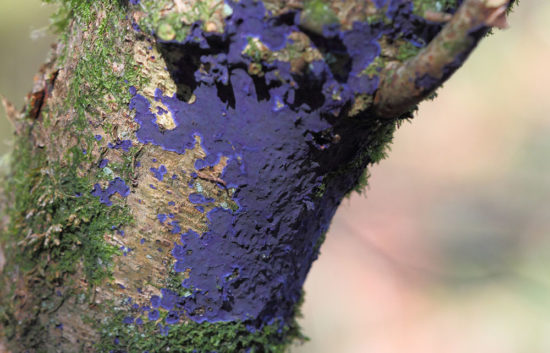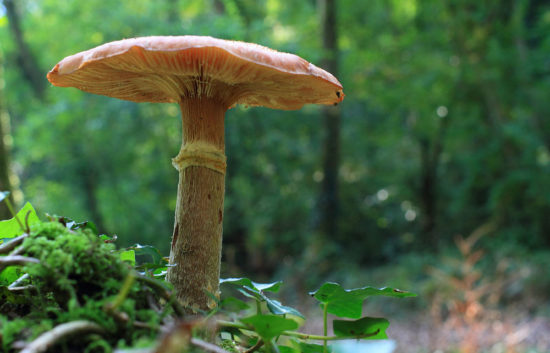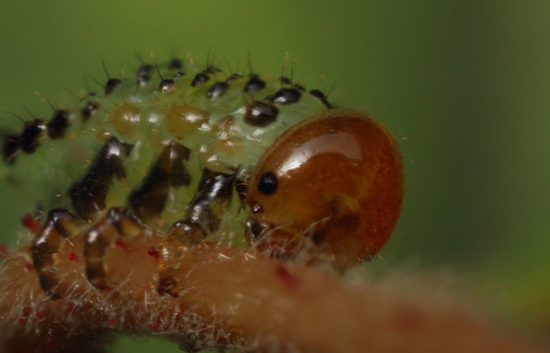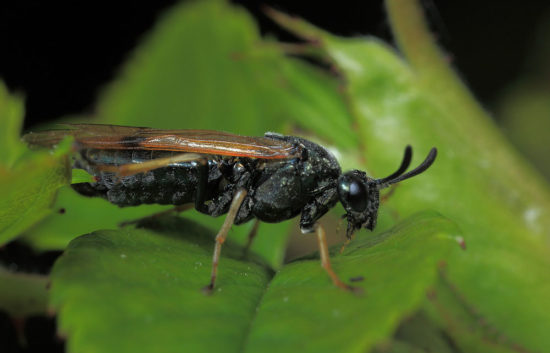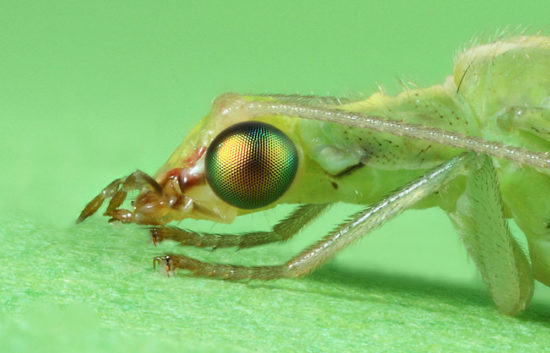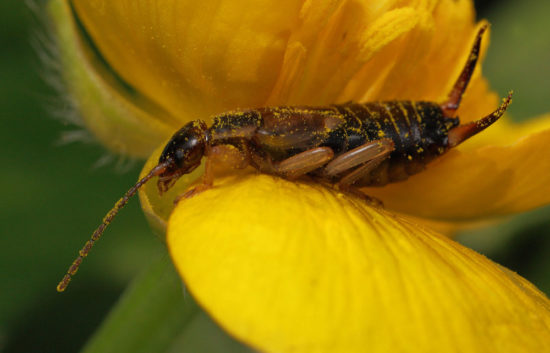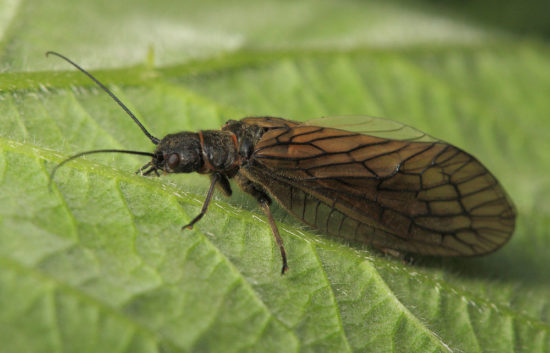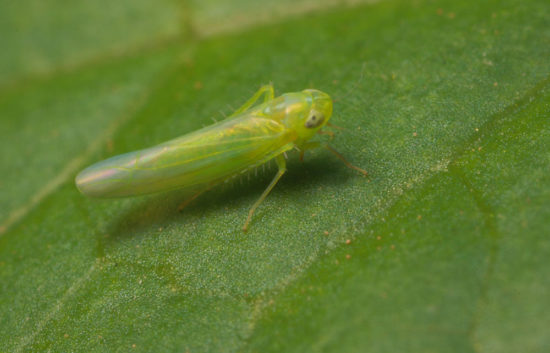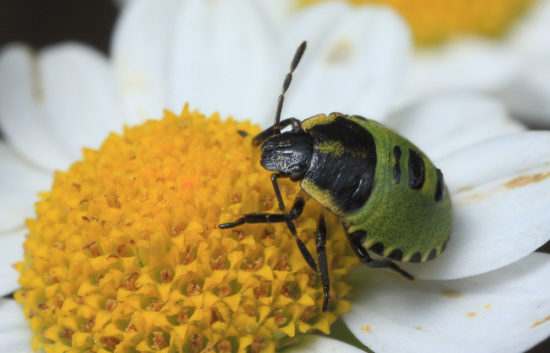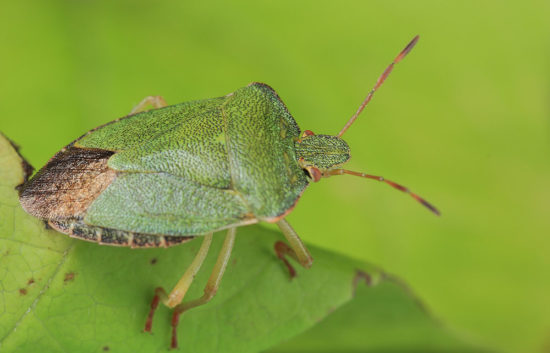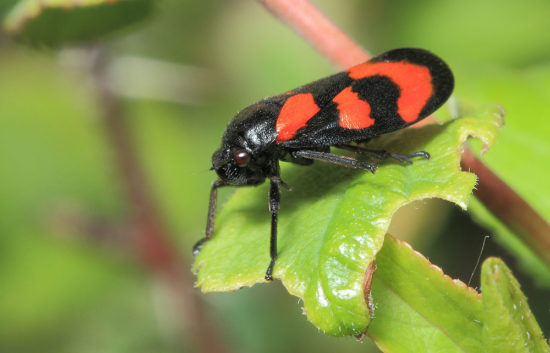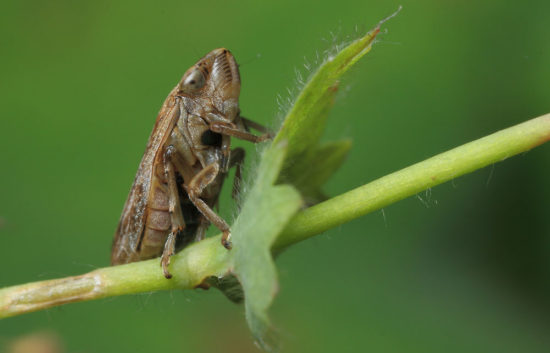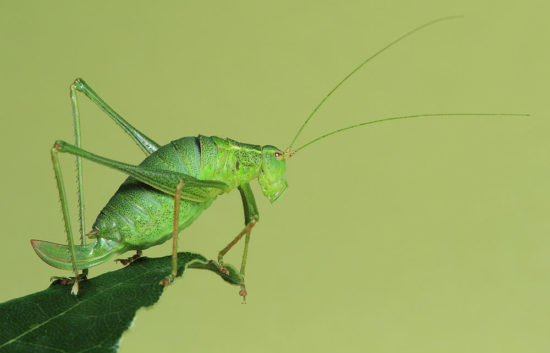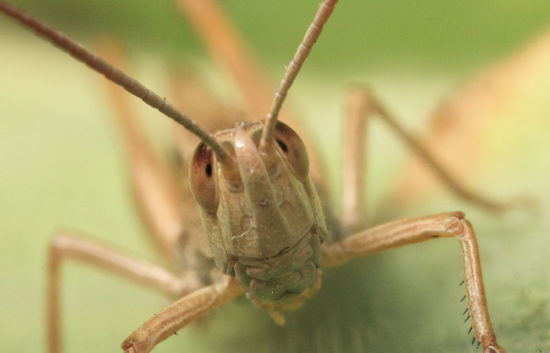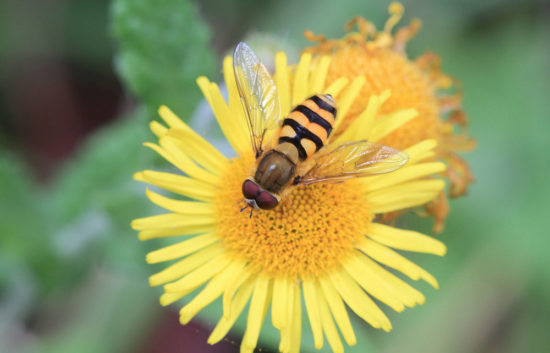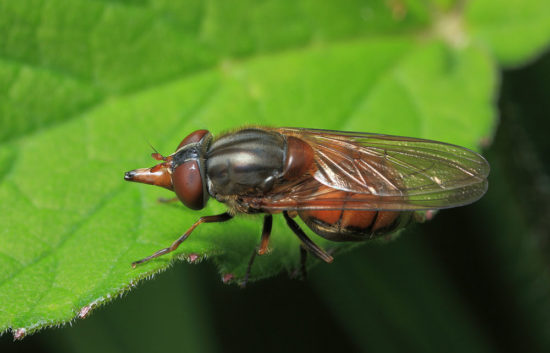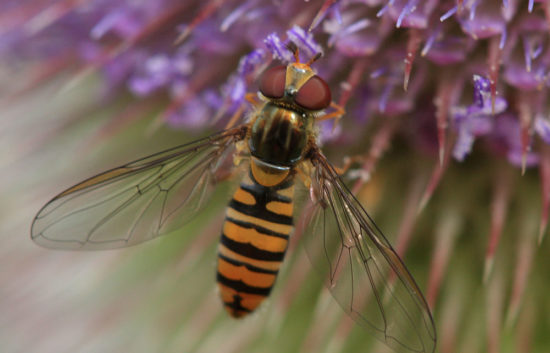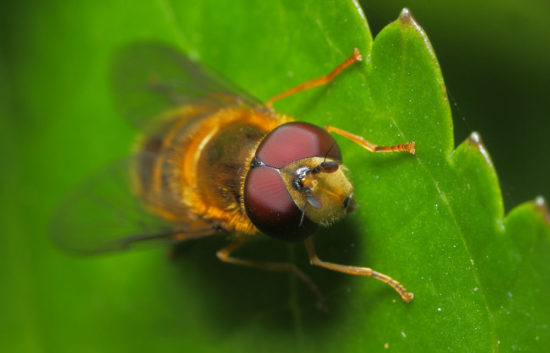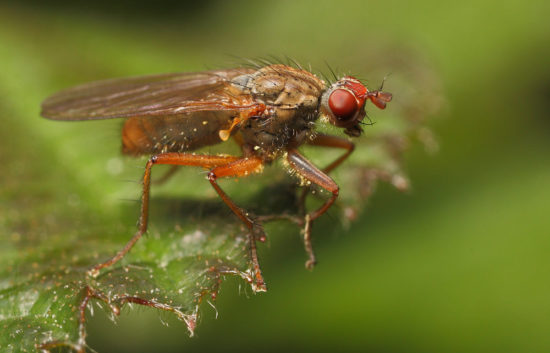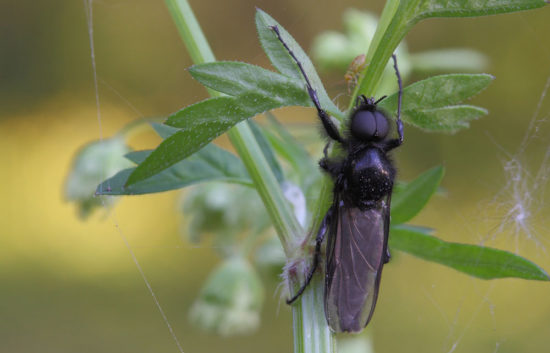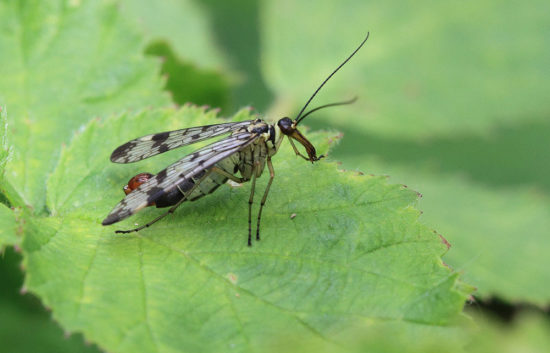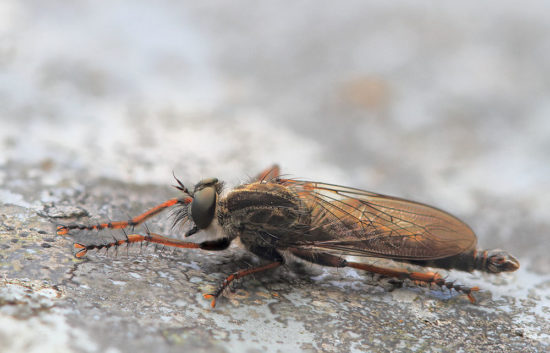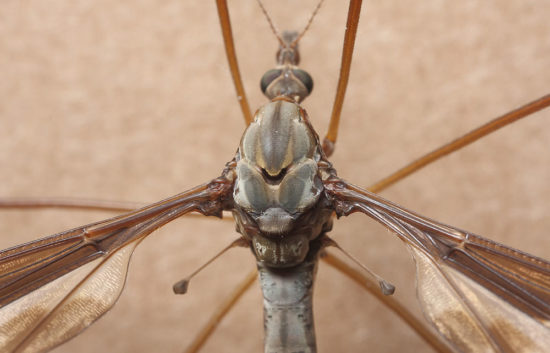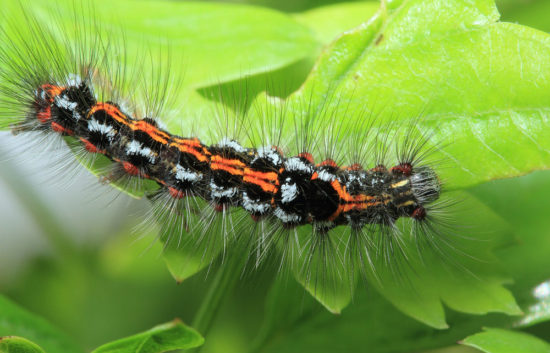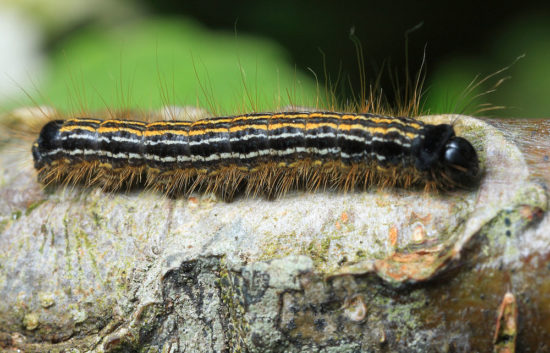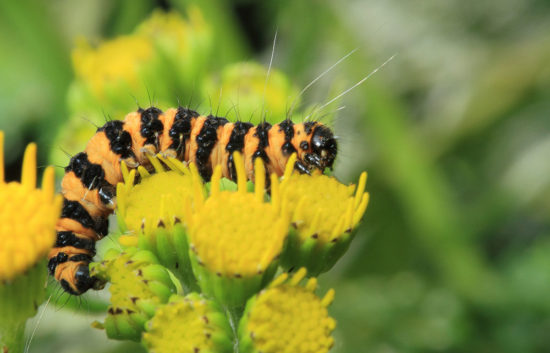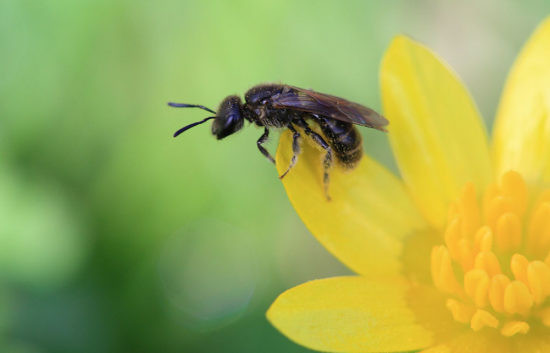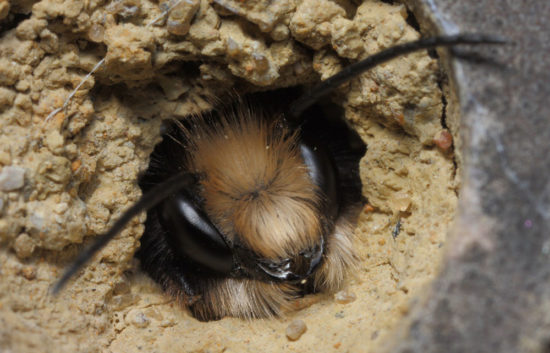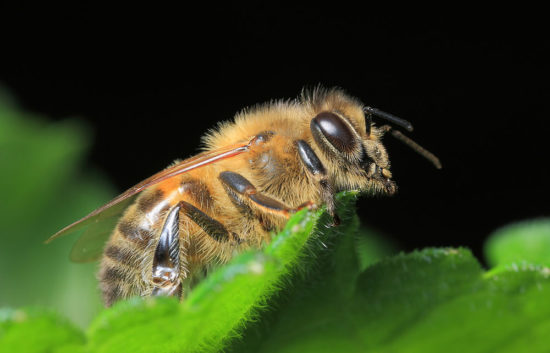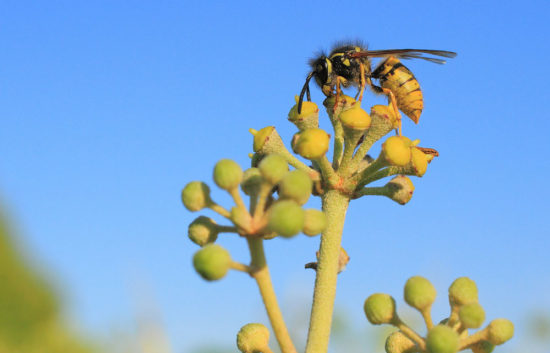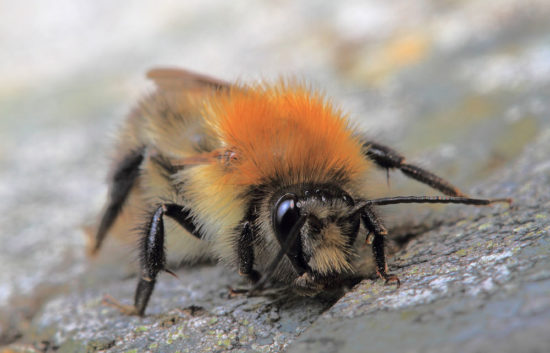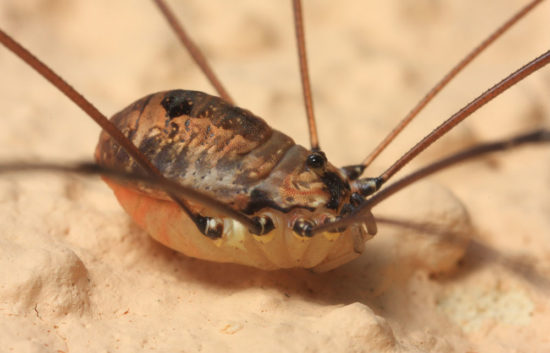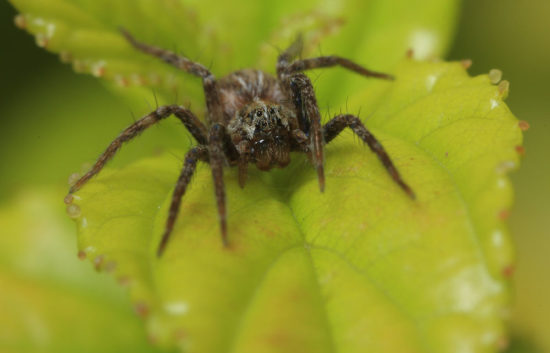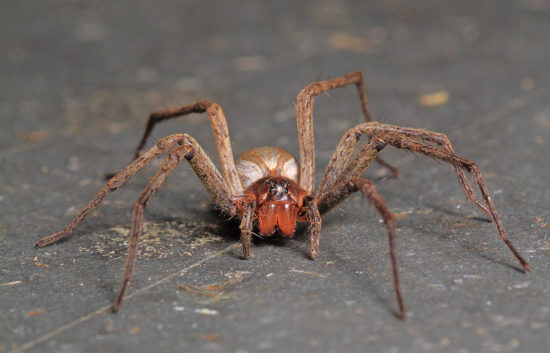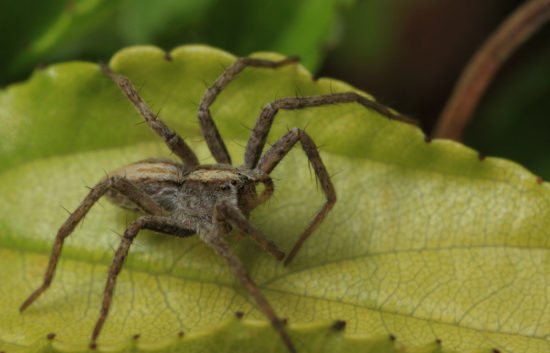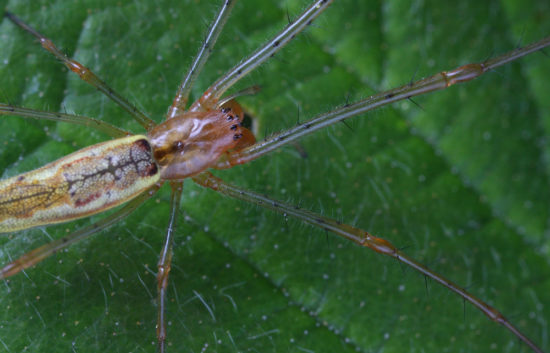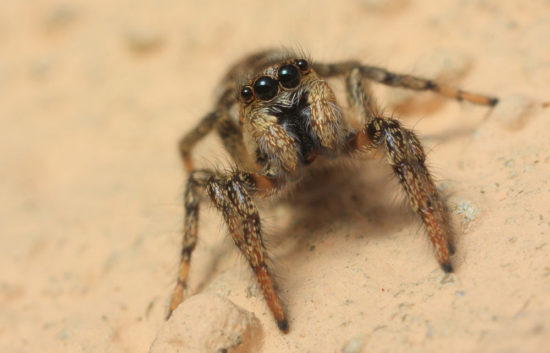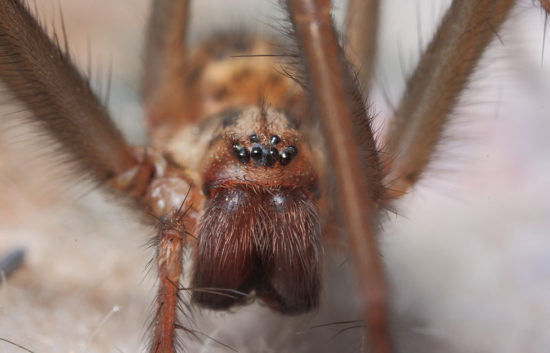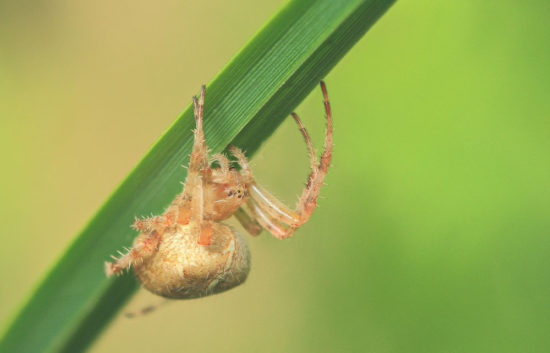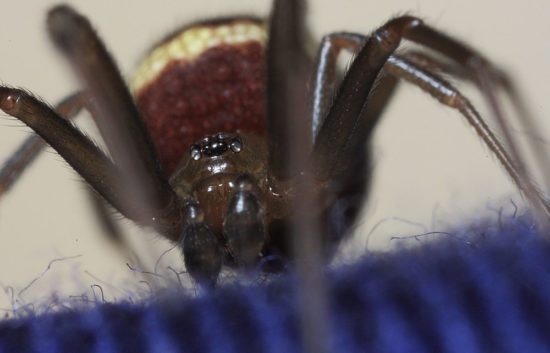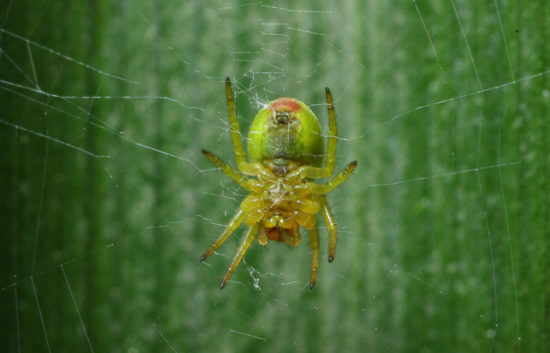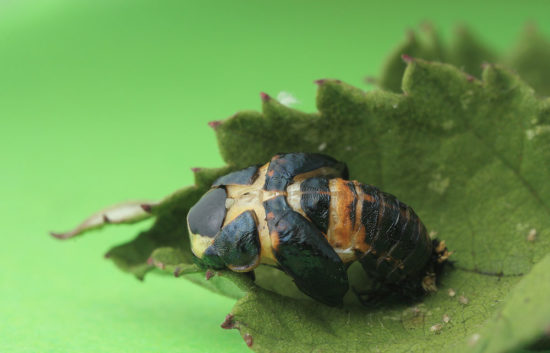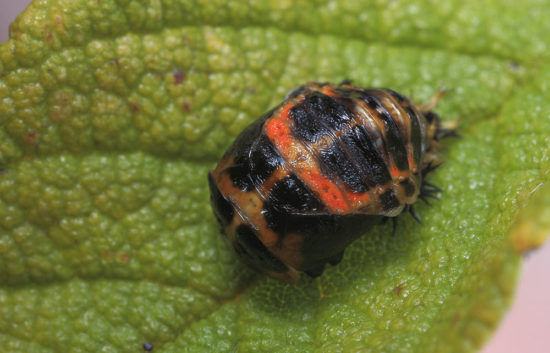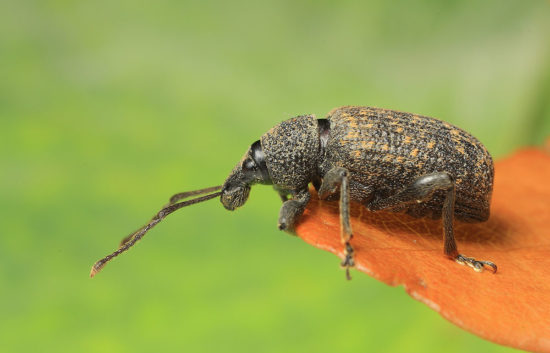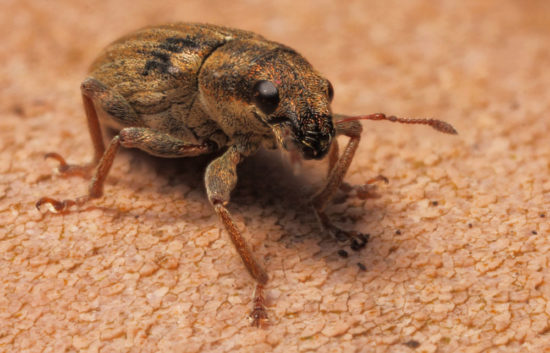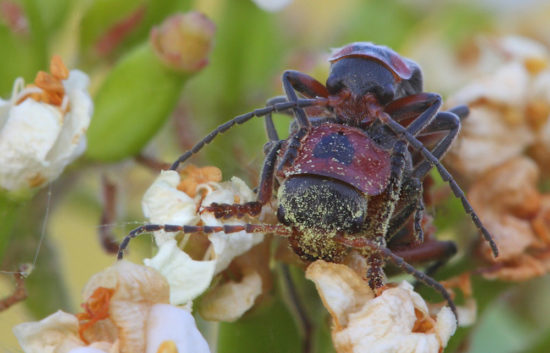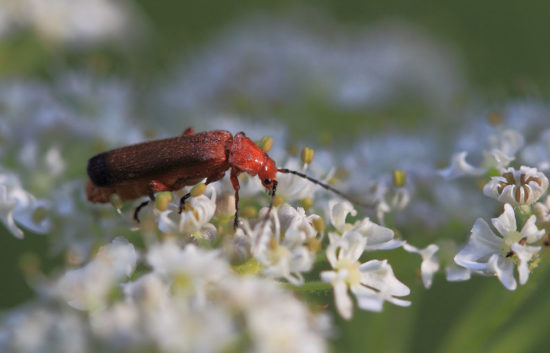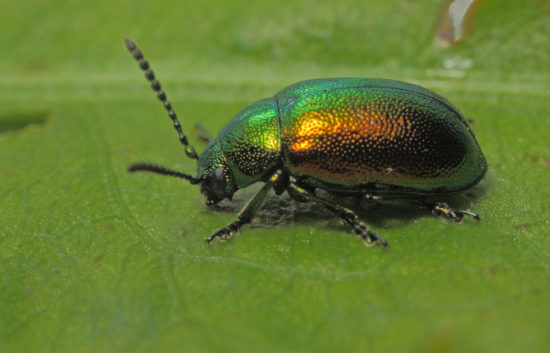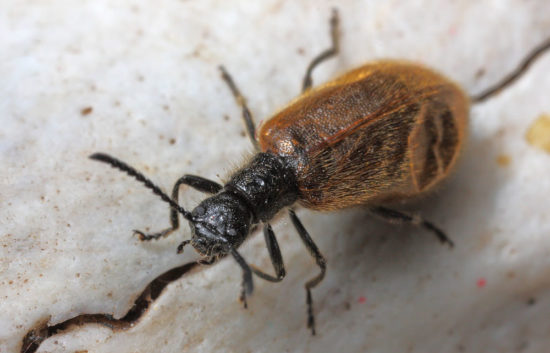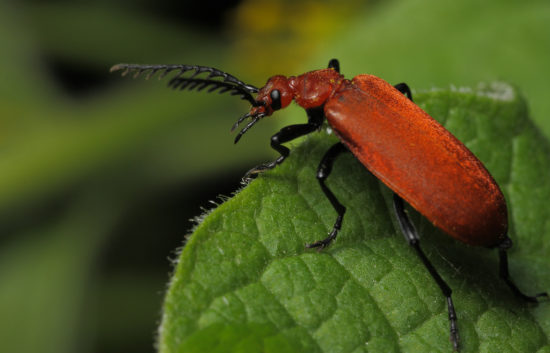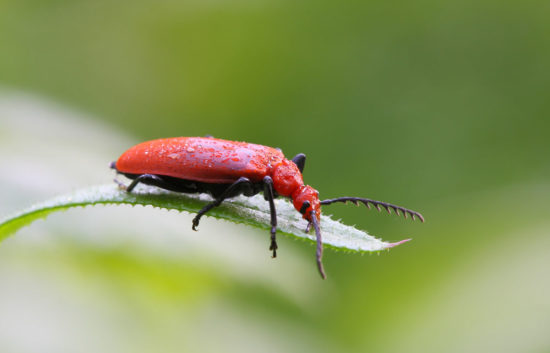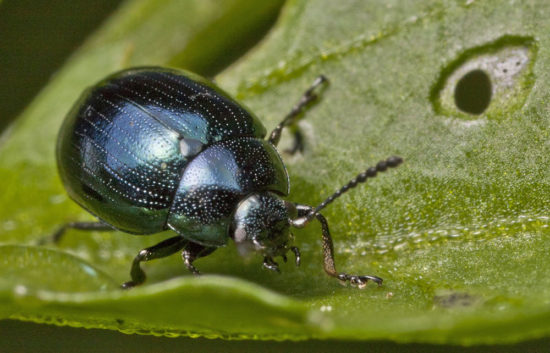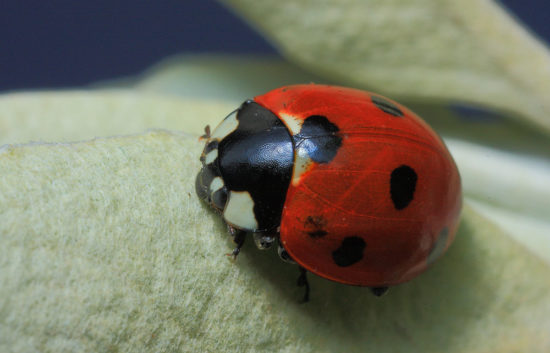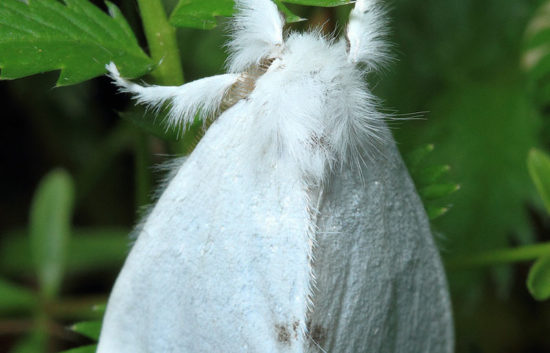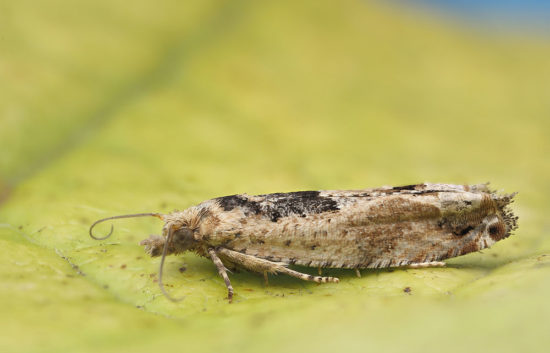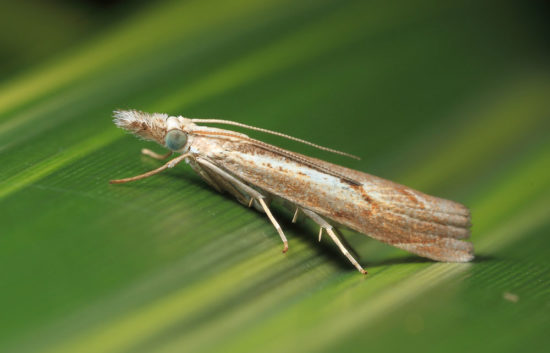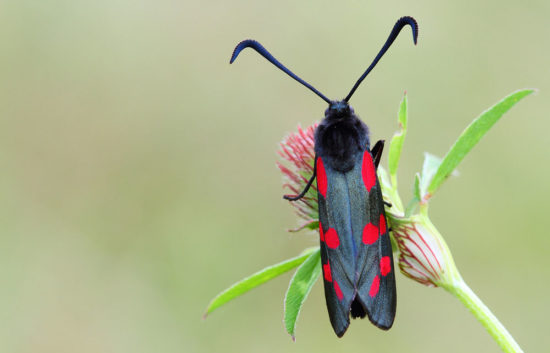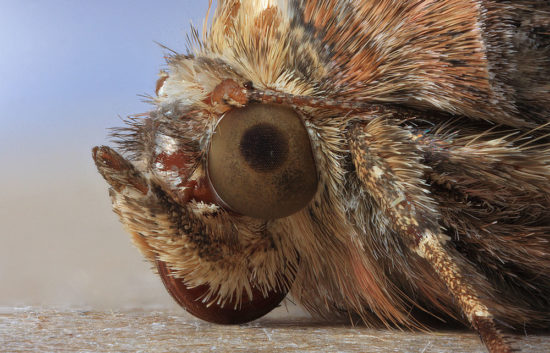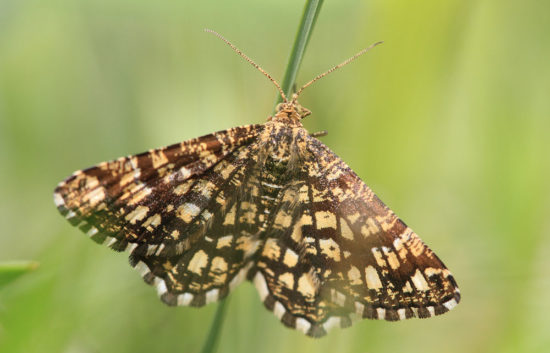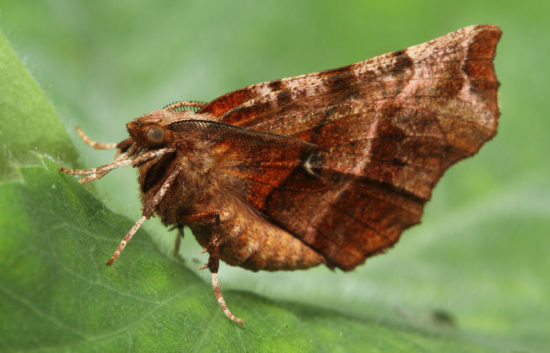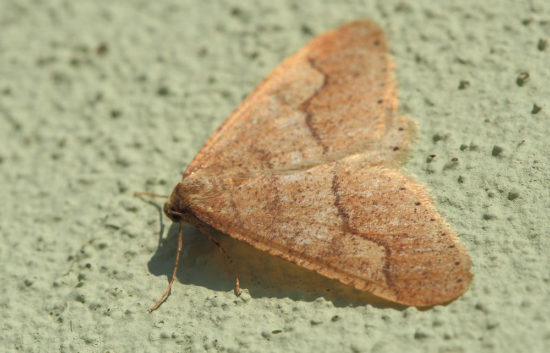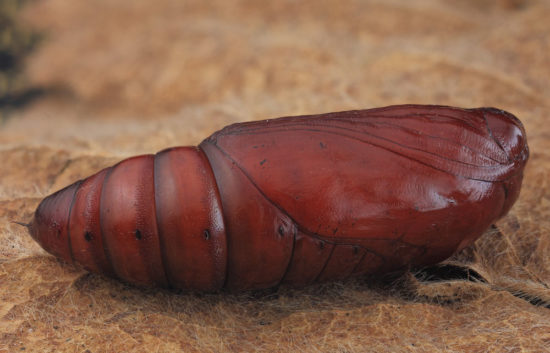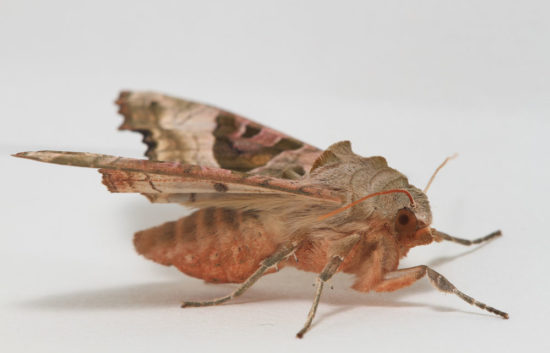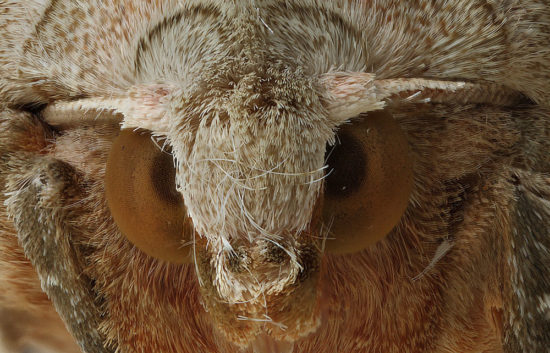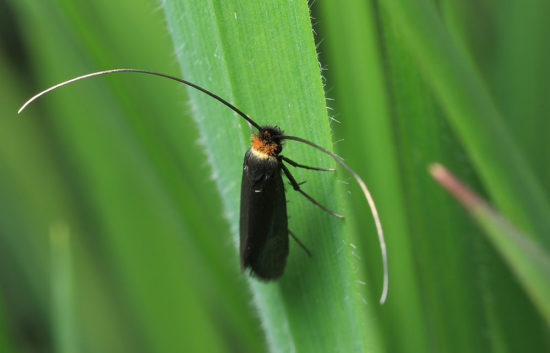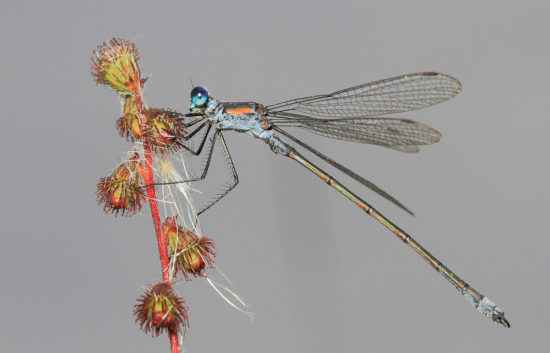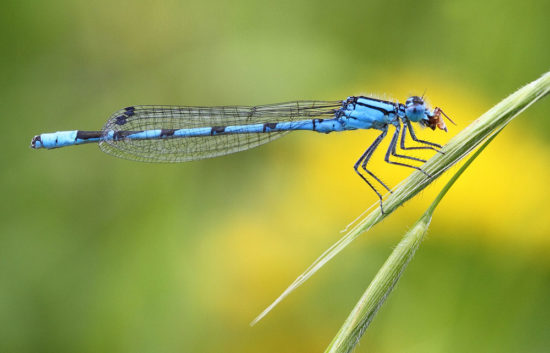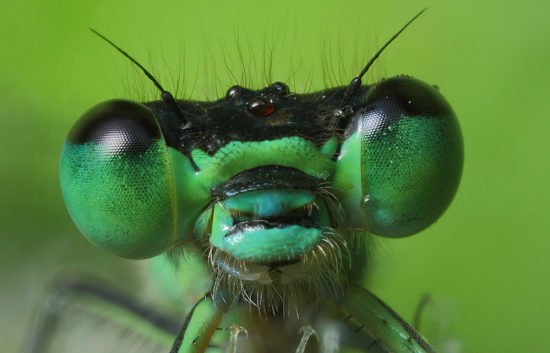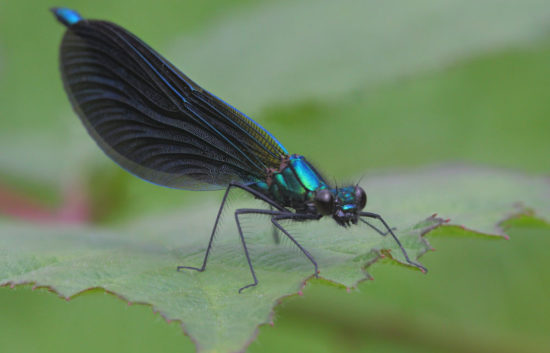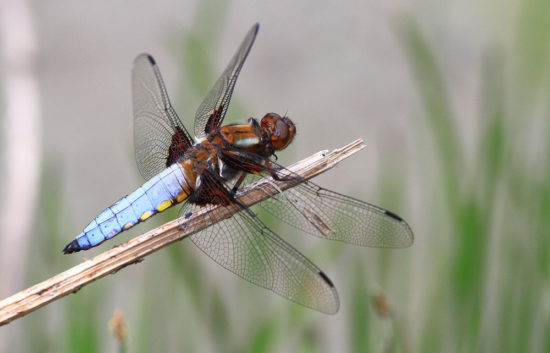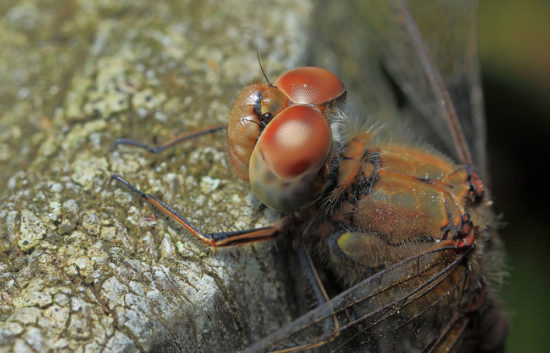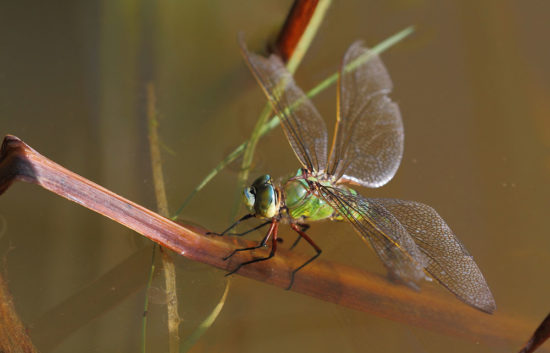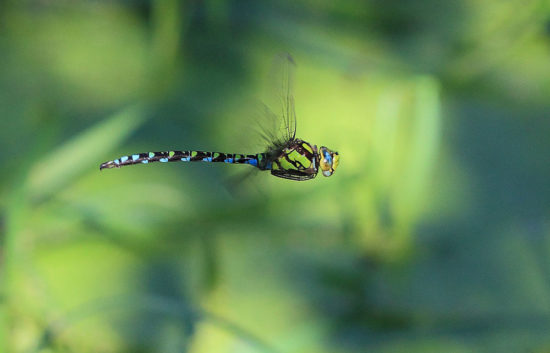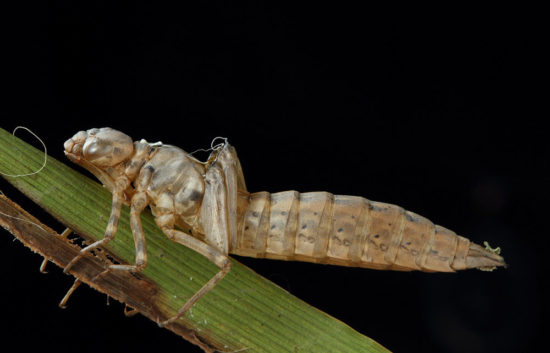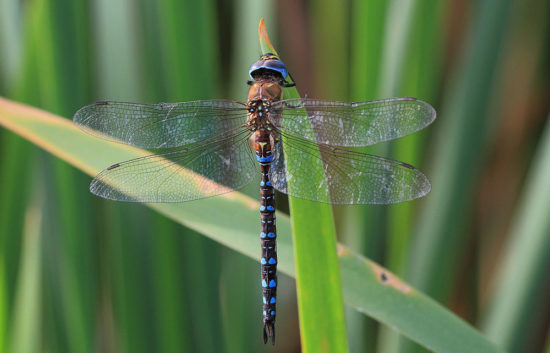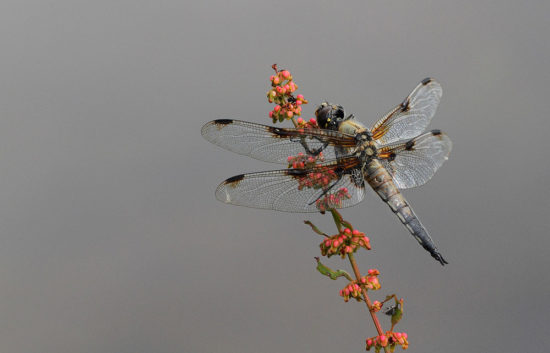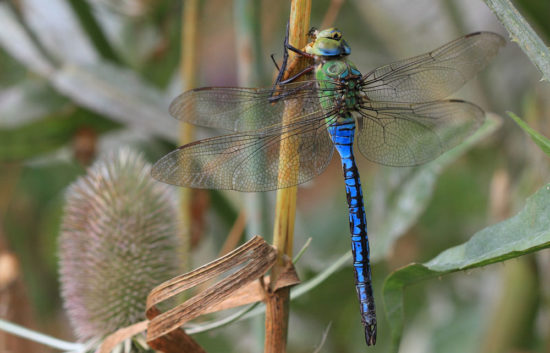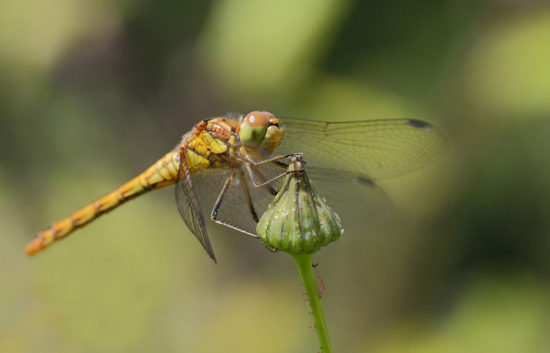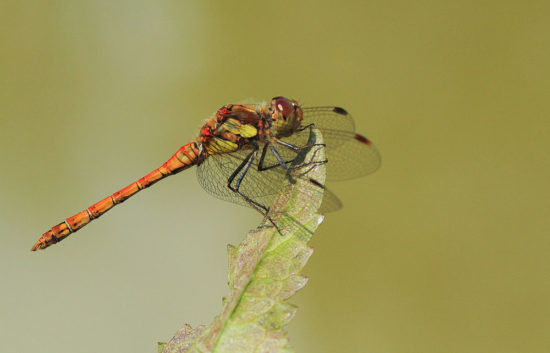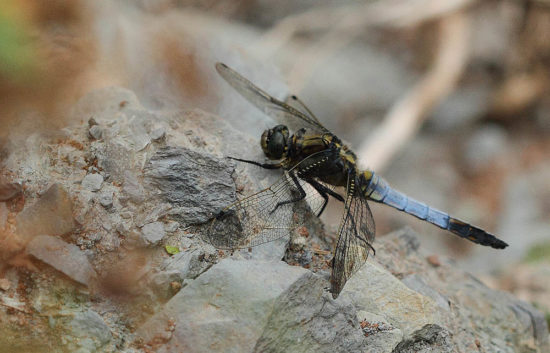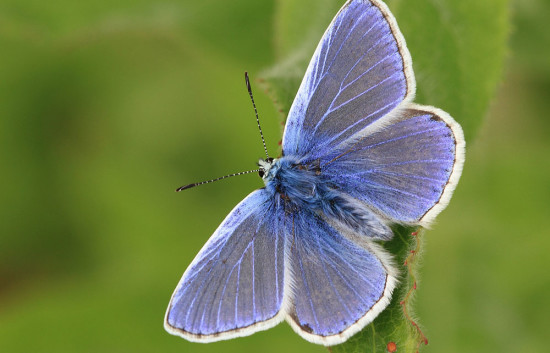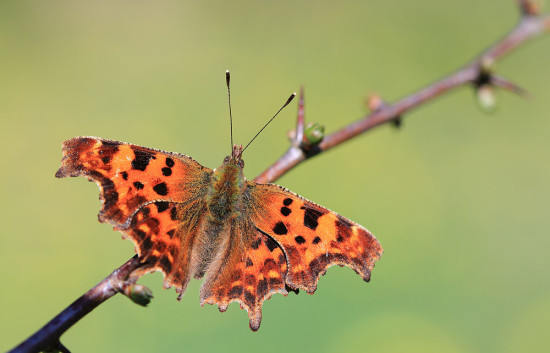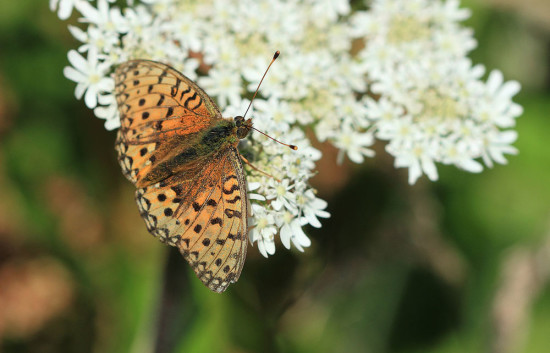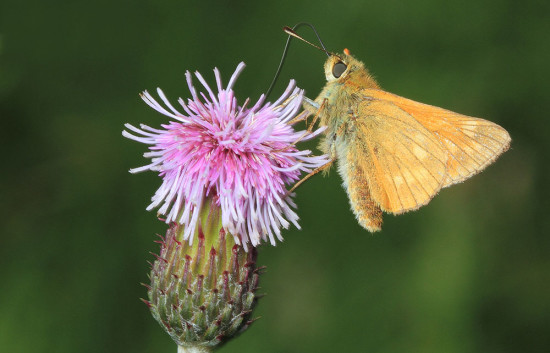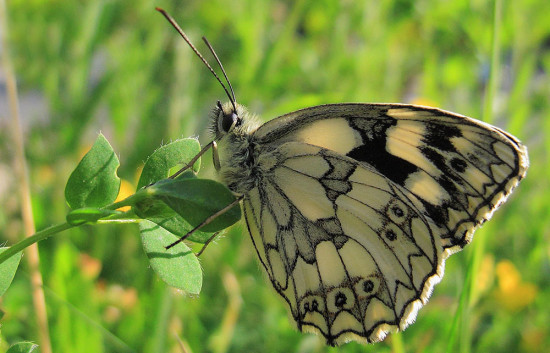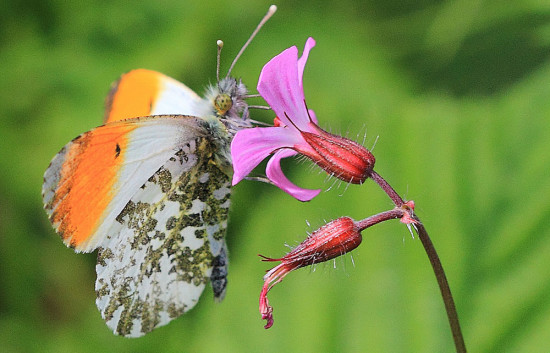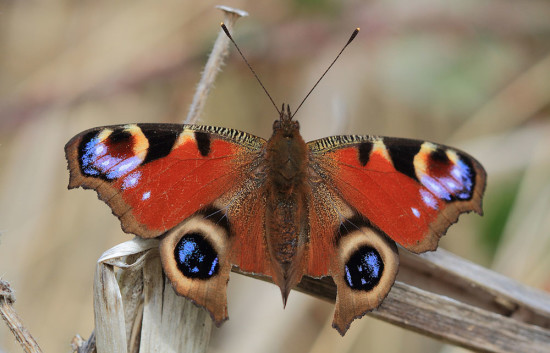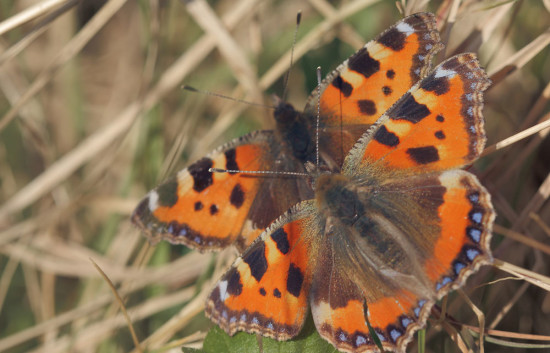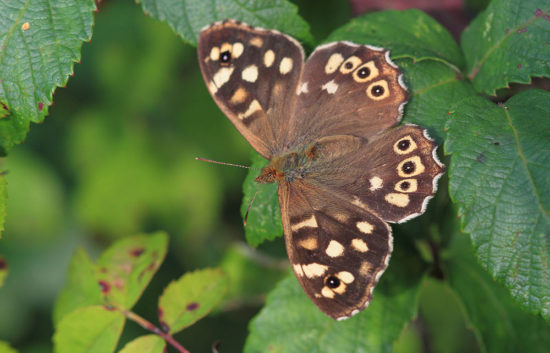- All
- Alderflies
- Amphibians
- Bees & Wasps
- Beetles
- Butterflies
- Caterpillars
- Crickets & Grasshoppers
- Damselflies
- Dragonflies
- Earwigs
- Flies
- Fungi
- Lacewings
- Moths
- Sawflies
- Spiders
- True Bugs
A female Longhorn Beetle found investigating a rotten tree stump, searching for suitable crevices on which to deposit her eggs. Kenfig Nature Reserve, Mid Glamorgan, South Wales ...
On a hot day in late May found on patches of bare ground where Wild Strawberries grew. Tiny and rather moth-like, this skipper was readily identified by its pattern of white chequers on dark wings, The male and female are...
Our smallest butterfly, its dainty appearance and rounded wings with silvery-blue undersides. These are dotted with black, lacking the orange found in most blues and more resembling a tiny Holy Blue. The upperside is blue in the male, unlike the...
The lovely orange-brown caps of Velvet Shank seemed to be glowing from out of the damp, moss covered rotting wood. The bright orange caps are generally darker towards the centre and appear slimy in wet conditions (they dry to a...
Very thin multicoloured bracket. The fruit body is semicircular or shell-shaped bracket with thin, wavy margin; sometimes form a rosette when growing horizontally. The upper surface is undulating and velvety, with a tough, leathery texture, dries hard and retains its...
Tripe Fungus is quite variable in appearance, depending on the state of decay of its host timber as well as the developmental stage of the fruitbodies. Like most if not all jelly fungi, Auricularia mesentica generally favours damp shady sites....
Venturing into Porthkerry Wood, (Vale of Glamorgan, Wales) I found these Scarlet Elf Cups, partly buried in damp moss and rotting wood. “The irregularly shaped cups have a smooth, bright red hymenial (fertile) inner surface and a felted outer surface....
Members of the family Exidiaceae are geletinous or jelly fungi in varied irregular shapes. They are generally associated with dead wood, both standing and fallen; some are host specific. Like most jelly fungi, they are conspicuous only in wet weather...
The common name Hairy Curtain Crust reflects the rippled form of edges of the fruitbodies, which do look like partly-drawn curtains. In this capture the fungi is growing out of the dead wood in the form of tiers of reflexed...
The genus Hygrocybe includes some colourful species. Most species favour unimproved grassland, particularly where it is grazed or cut; they fruit in late summer and continue through to late autumn. This small yellow waxcap has a greasy head and dry...
It was the 1st April and while walking along the river Lyner, a couple of miles outside Callington, Cornwall, I was surprised to have found plenty of fungi still growing out of rotting stumps. These captures were taken with the...
Uneven, rounded fungus that has a resemblance to burnt buns (hence the reference to King Alfred’s Cakes). Irregularly rounded or knob-like, firmly attached to the substrate without a stem; The head begins as a reddish-brown (first capture) before turning bluish-black...
The vivid blue colour of the Cobalt Crust is enhanced by the light of the sun which changes it to a more intense blue with violet tones. The colour loses its intensity with age. The crust comprises individual rounded spots,...
One of the most widespread and common brackets, present in virtually every birch wood. Belonging to the Coriolaceae family, brackets that are diverse in form and colour, most are attached to the substrate, generally without a stripe. Often with a leathery or...
One of the greatest challenges for anyone trying to identify this very common member of the Amenita genus is its tremendous variability. However, the pinkish colouring on the cap would indicate that this is probably a Rubescens (this epithet means...
Caterpillars are the larvae of butterflies and moths, which belong to the order Lepidoptera. Sawfly larvae look similar to caterpillars, but are an entirely different kind of insect. Sawflies are related to bees and wasps and belong to the order...
Lacewings are often called golden-eyed because of the brilliant golden or brassy shine from their eyes. One of several rather similar species known collectively as green lacewings. They are a distinctive and attractive group of delicate slow-moving insects. Like fine...
A familiar and abundant insect, often found resting and/or nibling on flowers. They are much the commonest European earwig and the only species seen regularly in Britain. This particular specimen was captured in Porthkerry Park, Vale of Glamorgan, South Wales. They...
Alderflies, though neither large nor brightly coloured, are quite often noticed because they perch on leaves, trunks and other objects. They are pretty straightforward to photograph because they tend not to fly away. The larvae are aquatic, and so the...
The Rose Leafhopper belongs to a huge family of jumping bugs, superficially like froghoppers but generally smaller and with lots of bristles on their back legs instead of the two stout spines of the froghoppers. The forewings are leathery and...
This is the archetypal shield bug as it is shapes just like a shield and large enough to be noticeable. It occurs in a variety of habitats, wherever there is shelter and food, but particularly around deciduous trees and shrubs...
This is the archetypal shield bug as it is shapes just like a shield and large enough to be noticeable. It occurs in a variety of habitats, wherever there is shelter and food, but particularly around deciduous trees and shrubs...
Froghopper – Cercopis vulnerata: This unmistakable black and red froghopper is a species of froghopper in the family Cercopidae. The adult is 9 – 11 millimetres in length and can be seen from April to August in a variety of habitats, grassland, meadows,...
Common Froghopper – Philaenus spumarius: A variable species, with many dramatically different colour forms (brown being the most common). Usually found on vegetation such as bushes in grassy areas from June to September. The larvae are the familiar producers of...
The Speckled Bush-Cricket (Leptophyes puntatissima) is a flightless species of bush cricket common in well vegetated areas of England and Wales, such as woodland margins, hedgerows and gardens. The eggs are laid in late summer into the bark or plant...
The Meadow Grasshopper (Chorthippus parallels) is usually found in damp, unimproved pastures and meadows. It is mainly green in colour with dark grey-brown stripe running along the flank to the eye (there are also brown and purplish forms). It has...
The Field Grasshopper (Chorthippus burnous) is a common and widespread and is usually found in open, sunny, grassland, including gardens. It is usually mottled brown in colour with barring on the sides and is most easily identified if seen close-up...
Rhingia: An unmistakable genus of dumpy orange overfills with a very obvious, exceptionally long rostrum that encloses the proboscis and allows the fly to feed on nectar and pollen in deep flowers, such as Red Campion, that other overfills cannot...
Episyrphus: Britain’s commonest hoverfly, commonly known as the Marmalade. This is an extremely variable species whose background colour is highly influenced by the temperature at which the larvae developed. Larvae in hot conditions produce adults with more orange markings (sometimes...
Epistrophe: Black-and-yellow banded overfills with mainly yellow faces that fly in the Spring and early Summer. Apart fro E. elegans, which is quite distinctively marked they are tricky to separate from other yellow-banded genera such as Syrphus. Epistrophe nitidicollis: This...
Yellow Dung-fly (Scathophaga stercoraria): Theses are familiar, albeit not very popular flies. They swarm around cow dung in large numbers, and the golden-haired males are particularly conspicuous. They are very active flies, constantly mating, laying eggs, or making forays to...
It is known as the St Mark’s Fly because it appears at or about St Mark’s day, at the end of April. The flies settle on vegetation and flowers, and fly off slowly, trailing their legs, if disturbed. Their favoured...
Although similar in general form to the commoner ‘daddy long-legs’, the Spotted Cranefly is much more distinctively marked, and can be readily recognised. It is common and widespread, and can occur in a variety of habitats such as woods, old...
Scorpion flies are so-called because the males have an upturned and curled over sting-like tail, resembling a scorpion, though they are quite harmless. They live as scavengers, or weak predators, including the skilful removal of prey from spiders’ webs without...
A group of bristly predatory flies which mainly catch other insects in mid-air. All the robber flies have a powerful beak, with which they quickly penetrate their victims, and very hairy faces. The larvae feed in mammal dung, often of...
The red, black and white final instar caterpillars are frequently seen during the day. They commonly occur in gardens and woodlands as well as more open areas with deciduous tree hedges. The moth flies mainly in a single generation between...
The fully grown caterpillars can vary in colour from brown, grey to almost black. The reddish dorsal line isn’t easy to see amongst the hair of fully grown caterpillars. The rosette like tufts of hair can be useful when identifying....
Caterpillars will often be seen venturing outside of their silken web community. Black, white and orange stripes – as well as a band of thick orange setae extending down side – are characteristic features of the Lacky Caterpillar. The Lacky caterpillar is also one...
These conspicuous and distinctive orange-and-black caterpillars feed openly, usually on Common Ragwort. The Cinnabar moth is one of the most easily recognised moths, flying during the day in many open habitats and sometimes in gardens. Sometimes in late August, adult...
Lasioglossum bees (commonly known as Sweat Bees) are small black bees (smaller than the honey bees) known to have bands of light hairs at the base of their abdominal segments. As can be seen, this species has a preference for...
They are named from their habit of making compartments of mud in their nests, which are made in hollow reeds or holes in wood made by wood-boring insects. It is a tremendous pollinator, calculated to be between 120 and 200...
The Honey Bee, is any bee member of the genus Apis, primarily distinguished by the production and storage of honey and the construction of colonial nests from wax. Honey bees represent only a small fraction of the roughly 20,000 known...
During Autumn, when nectar and pollen sources dwindled, the ivy provided a much welcome source of food for many insects; such as the common wasp, late-season butterflies (Red Admirals) hoverflies, bumble bees and the ivy bee (a bee that specialises...
The Common Carder Bee is a brown and orange bumblebee, sometimes displaying darker bands on the abdomen. It is one of our most common bumblebees, emerging in the early spring and can be seen feeding on flowers right through to...
Description: Strong and stout toad with great size variation. Has very wart skin, conspicuous eardrums and large parroted glands that are oblique if seen from above. Pupils horizontal and oval with copper-coloured eyes. Underside brownish, yellowish, reddish, grey or olive;...
Description: Strong, short-legged brown frog with a blunt and somewhat raised snout if seen from the side. If the hind legs are carefully bent forward along the body, the joint of the heels does not reach the snout. Oppressed smooth...
Opiliones is a an order of arachnids commonly known as harvestmen. However, their phylogenetic position within Arachnida is disputed: the closest relatives may be the mites (Araci). They can be easily distinguished from even the long legged spiders by their...
1. The spider bites the fly and starts to wrap it in silk, wait for it to die, then begin to eat it. As a first step in eating the spider will literally vomit digestive fluid over the fly. 2....
Named for their swift motion, particularly while attacking prey, the wolf spider can sometimes be seen scurrying across open surfaces. Anatomy: All spiders have in common a two-segmented body, eight legs, spinnerets and the absence of chewing mouthparts or wings....
The Raft Spider is a large, rich chocolate-brown spider, with a pale yellow stripe running down each side of the body. It is a chunky spider that lives around the edge of ponds and swamps. Adults sit at the edge of...
The Nursery Web Spider is a relatively large, slender-bodied spider, pale grey-brown with a pattern of darker brown and black stripes running the length of the body. It is a common spider of grassland and scrub, and is often seen sunbathing...
Long-jawed Orb-weaver Spiders, sometimes called Common Stretch Spiders spin an orb web to catch their prey. They’re usually found in vegetation close to ground level and frequently close to water. The elongated body can vary in colour from creamy-yellow to...
The Salticidae are without doubt, the most appealing of spider families and their charming and charismatic nature, make them a natural favourite for photographers. Their often small size and frequent variation in markings, do make them a little tricky to...
The house spider (Tegenaria domestica) is probably the best known and perhaps the most hated of the British spiders, and is often encountered trapped in the bath. The house spider is fairly large and hairy with long legs. It varies...
The orb-weaver spiders (family Araneidae) are the builders of spiral wheel-shaped webs often found in gardens, fields and forests. Individual spiders can range from light yellow, to orange-brown or dark grey, but all European garden spiders have mottled markings across...
The abdomen of this false widow is a red-brown colour with a crescent shaped stripe at the front and three pale triangular spots along the top. These markings vary from spider to spider. Sometimes they’re cream coloured and sometimes they’re...
A very conspicuous spider with a dark thorax and almost luminous, yellow-green abdomen, this species spins an orb web in tall vegetation, trees and bushes. It is very common in gardens but sometimes overlooked as its striking colours are good...
British ladybirds are under threat from a cannibal species from Europe. The harlequin ladybird, which is now the second most common in the UK, is eating other ladybirds – including the 2-spot and 10-spot – at such a rate, it has...
The pupa begins to extend and split. Luckily for me I had two pupas developing at the same time which improved the chances of capturing this magical moment! I was lucky with this one. I wasn’t so lucky with the...
Day 3: The next morning the Pupa had turned from orange to black. From the front view one can make out the rudimentary shape of what will in 11 days become the pronatum. The head is safely tucked under and hidden from...
Day 1: The larvae has attached itself to the topside of a leaf by its hind end and has contracted into something of a dome-shape. This ‘hunched-up’ form is a characteristic of the pupal state and the development / metamorphosis...
The weevils are mostly quite small beetles in which the front of the head id drawn out to form a beak or rostrum with the jaws at its tip. The antenna are elbowed and normally attached part way along the...
The weevils are mostly quite small beetles in which the front of the head id drawn out to form a beak or rostrum with the jaws at its tip. The antenna are elbowed and normally attached part way along the...
Pics 1 – 3: These rather attractive pair of Soldier Beetles take their name after the red and black colours reminiscent of an old-fashioned soldier’s uniform. When not mating, Soldier Beetles are active predators, hunting on flowers and leaves in sunny...
This Orange Ladybird appeared while I was photographing fungus. I quickly put away the 7D with 35mm macro and took out the 40D with MPE. I looked in my bag for my home-made diffuser and was annoyed with myself for...
Usually found on Dock plants, it can be seen anywhere that Dock is present, such as roadside verges and field margins. It is often seen near to water. The pregnant female is very noticeable. Her body becomes so swollen that the...
This beetle has conspicuous yellow-brown wing cases with a darker head. It also has a rather odd oval sort of shape. The whole animal is conspicuously bristly. Adults feed on pollen and nectar of ‘open’ flowers e.g. Yarrow or umbels....
This is the more common Serraticornis with its characteristic red head as opposed to the Coccinea which has a black head. The whole body is rather flat and the antennai are comb-like. May – July, mainly around hedgerows and woodland...
This is the more common Serraticornis with its characteristic red head as opposed to the Coccinea which has a black head. The whole body is rather flat and the antennai are comb-like. May – July, mainly around hedgerows and woodland...
The adult beetle is 7mm long and is a shiny dark blue colour. The larvae have soft rotund bodies that are blackish in colour. Both adults and larvae feed on the foliage of cultivated and wild mints, Mentha spp. The blue mint...
The 7-spot Ladybird is ‘the’ ladybird that everyone is familiar with. A virtually ubiquitous inhabitant of gardens and parks, the 7-spot Ladybird will turn up anywhere there are aphids for it to feed on. Adults hibernate in hollow plant stems...
All parts of the adult are pure white with the female being larger than the male and having a large tuft of yellow hairs at the top of her abdomen (hence its name), which is used to cover the newly-laid...
Tuta absoluta 5mm. First seen Cheltenham, Gloucestershire, in 2010. Potential threat and could become established in commercial Tomatoe-growing farms and greenhouses. Originally from South America, now established in S Europe. is a devastating pest of Tomato. It is originated from South...
As their name suggests, Grass Moths are usually found in grassy situations. A typical example, the Straw Grass-veneer (Agriphilia straminella) is common and widely distributed although its small size (8-10mm} makes it difficult to spot while resting in the grass....
This is the most commonly found burnet. It occurs throughout England, Wales and Ireland, but is more local in Scotland, being largely confined to coastal sites. During the day, it behaves very like a butterfly, moving from flower to flower...
The Silver Y, one of the most commonly seen day-flying moths, is an immigrant from continental Europe. Coastal sites are good places to search for this species, where thousands can sometimes be seen together, but it can occur almost anywhere....
At first I thought this was a butterfly because it was flying in the sunshine, basking with its wings open and would often settle with them raised up over its body. Almost all moths fold their wings down along their...
Pic 1: The conspicuous patterns serve as a warning to predators, because the moth’s body fluids are poisonous. The moth normally hides its hindwing under the cryptic forewings when resting. If a threat is perceived, the moth quickly shows its...
First capture taken with my (then) new camera, Canon 7D. I was getting fed up with constantly having to change lenses from the MPE-65mm to the 100mm Macro and vice versa. In the studio it’s no big deal but in...
The male has orange-brown forewings with a paler yellowish band and a row of dots along the edge of the wing which gives it its common name. The hind wings are whitish with a faint band. There are also melanic...
This moth pupa was found in my garden shed. The case had a reflective waxy-like coating (not too dissimilar to a ladybird elytra) a good subject for which to experiment with stacking, studio flash and diffusion. I used the obligatory...
All captures are studio shots using two diffused flashes. Pic 1: The cocoon had split and a beautiful Angle Shades moth finally emerged. I was beginning to think that the moth pupa had died and that my daily breaths of moist...
Pics 1 & 2: Canon MP-E 65mm Macro at 3X and focus stacked using Zerene Stacker. Once I had finished photographing I placed the moth in a shaded area of my garden. I was lucky enough to see it warm...
Adela Cuprela is tiny species of moths, member of the Adelinae family of micro moths often referred to as “Longhorns”, having antennae considerably longer than their 5mm wingspan. The orange ruff indicates that this is a female, the male has...
One of the three most widespread Dragonflies, this is the first species to emerge in spring and brings a welcome dash of colour to otherwise sombre waters at that time of year. The large red damselfly is a medium-sized damselfly which...
The emerald damselfly is a medium-sized damselfly which lives amongst lush vegetation around the edge of ponds and lakes, ditches and canals. Perched emerald damselflies can be distinguished from the other damselflies by their habit of holding their wings half-open,...
The common blue damselfly lives up to its name in colour. Our most common damselfly, it is found around almost any waterbody and can also be found away from breeding sites in grassland and woodland. It is s a regular visitor to gardens...
Pic 1: I’m beginning to find that damselflies are less likely to fly away if they’re approached very slowly from a low angle, instead of from above. The reason for this may have something to do with the structure of...
This is one of the few British damselflies that is restricted to running water, being found only in streams and rivers, with sand or gravel bottom. These beauties were captured along the river Lyner, a couple of miles outside Callington, Cornwall. Pic...
Pic 1: Noticed that the Chaser would often return to his favourite perch and then dart-off in order to chase off other rival dragonflies or mate on the wing with females. I waited patiently and as sure as night follows...
This Common Darter was resting on a park fence and was very tolerant of my presence (possibly because he was enjoying the warmth of the sun). This capture was taken at the minimum focussing distance of the 100mm macro i.e....
The emperor dragonfly is a very large, impressive dragonfly which is on the wing from June to August. It is a common dragonfly of large ponds and lakes as well as canals and ditches and is rarely found away from...
Photographing dragonflies in flight is particularly challenging and difficult, especially with the short focal length of a macro lens. However, with patience, perseverance and above all a planned approach, it is possible to take some decent captures. The secret is to spend...
The exuvia is the exoskeleton of the dragonfly which it lived in for a number of years as a nymph in an aquatic environment. The outer casing is from the recently emerged dragonfly and the exit hole is just behind...
Didn’t want to risk getting any closer for fear of scaring the dragon away! Quite pleased with the detail on the wings. This male (along with many others) was patrolling territory along the edge of the pond. The flight of...
Pic 1: Very pleased to see my picture of a Four Spotted Chaser (captured back in July 26, 2014) published in the latest March issue of “Wild Planet Photography Magazine”. Although I didn’t win this month’s ‘Wildlife Mentor Competition’ I’m...
Pic 1: Very pleased to find that my capture of an Emperor Dragonfly devouring a Common Darter, which appeared in Wild Planet issue 20/June, has been chosen to appear in The Wild Planet Annual 2015 (p54). The abdomen of the poor...
This restless little species is the most widespread dragonfly in the lowlands. It flies late in the year, even into December. Adult Identification: In both sexes, the thin black line across the top of the fons does not extend down...
This restless little species is the most widespread dragonfly in the lowlands. It flies late in the year, even into December. Adult Identification: In both sexes, the thin black line across the top of the fons does not extend down...
The black-tailed skimmer is a medium-sized, straight-sided, fairly narrow-bodied dragonfly. It is on the wing from the end of May to August and is commonly found in flooded gravel pits and reservoirs, where it flies low over the water before...
Pic 1: As with all butterflies, the eye catching wings of the Common Blue derive from minute scales arranged in overlapping tiles across both surfaces of each wing. As Jeremy Thomas explains: ‘the colours are produced in a combination of...
Pic 1: This perching Comma is eagerly awaiting the arrival of a female. There were plenty of Tortoiseshells to contend with but this plucky little fellow wasn’t ready to give-up his territory without a good fight. Adult Commas can be...
Every five-years or so, Butterfly Conservation and its partners publish a ‘state of the nation’ assessment of the UK’s butterflies. These influential reports set out the key results for butterfly species, highlight the implications of recent research and policy initiatives,...
One of the most endangered and rapidly declining butterflies, restricted almost entirely to western Britain, from the Lake District south to Dartmoor. This particular specimen was captured in Kenfig Nature Reserve, Bridgend, South Wales. There are thought to be fewer...
Pic 1: This butterfly favours grassy areas, where food plants like this Meadow Thistle, grow in sheltered, often damp, situations and remain tall and uncut. Pic 3 & 4: Having selected a suitable spot, a male chooses a flat leaf...
While on a trip from Birmingham to London I stopped at a service station on the M40 just outside Oxford. I was on a business trip so didn’t have the 7D or the 40D, however I always take the G12...
Pic 1: The Orange-tip does not form discrete colonies but wanders in every direction as it flies along hedgerows and woodland margins looking for a mate, nectar sources or food plants. Captured feeding on Red Campion (Silene dioica) in Porthkerry...
Perhaps a more appropriate name for the beautiful Peacock butterfly would be the ‘Owl’ – for if you rotate the view of the adult upside down you will notice that the twin hindwings assume the image of a Little Owl...
Pic 1: What better way to welcome the Spring than managing to capture this pair of Small Tortoiseshells. Taken in Porthkerry Park, Barry, Vale of Glamorgan on 8.3.2014. Natural light with Canon 40D and 100mm macro. Pic 4 & 5:...
Pic 1 – 5: September was a good month for Red Admirals feasting on Ivy. During Autumn, when nectar and pollen sources dwindled, the ivy provided a much welcome source of food for many insects; such as the common wasp, late-season...
The soft and velvety wings of the Ringlet are bordered with the characteristic fine white fringe that shines as it catches the sun. The undersides are adorned with distictive and gleaming eye spots. It is these that gave this butterfly...
Pic 1: Perching with wings held wide open and pressed flat against the top of a leaf, this Speckled Wood is absorbing the warmth from the sun. The males occupy sunlit spots where a gap in the canopy allows the sun...

